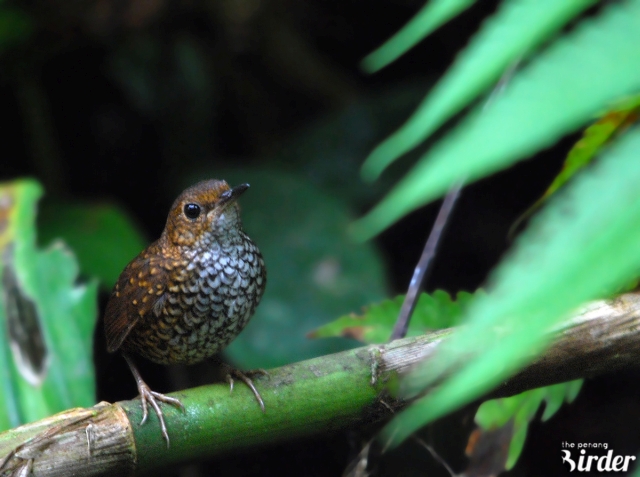After
more than 180 days, I finally ventured out into field for some much needed
birding. The government eased the travel restrictions between states and myself, fully
vaccinated. The Air Hitam Dalam Educational Forest remained relatively the same
since the last time I was here. However, there was one difference. I had to
follow the new normal and donning a medical mask is very much be a part of everything
I do nowadays - including birding.
A
Crow-billed Drongo was shadowing the movements of a pair of Plaintain Squirrels
attracted by the insects flushed by the mammals. Although the only image obtained
during the encounter could not reflect the true beauty of the Crow-billed
Drongo but to watch it hawk among the foliage of the riverine trees was a great
start to the day.
I
admit that my identification skills are not as sharp as they should be as they have
not being put to use for a long time indeed. But no matter how long I have been
kept away from birding, there is no mistaking a Green-billed Malkoha. When it swooped
across the access road with its long tail trailing and all, it certainly made
me realize how much I miss this unusual hobby of mine. And just before the
cuckoo disappeared into the swamp forest, it was kind enough to leave me with more than just a
memory.
Shortly
after, a true test of my identification skills took place. Flitting about the foliage
of the canopy level, a little brown job looked set to giving me a hard time. Initially,
I struggled. Prominent wing markings tried to complicate my thoughts.
Unexpectedly, the bird dropped down to a smaller tree and good were now
available to me. And the identification of this juvenile Asian Brown Flycatcher,
solved.
The
Malaysian Pied-Flycatcher after having terrorizing the small insects in the
vicinity decided to take a breather on a somewhat expose perch. One does not
see this notoriously active bird stationary like this all that often and taking
a moment to appreciate it was the least I could do.
A
lone male Common Flameback created such a ruckus that it would it impossible to
ignore. Come to think of it, with that striking plumage of his, it would still
be impossible to ignore him even if he was as quiet as a church mouse.
Although
I mostly derived inspiration from birds, this attractive flower has a certain
appeal to it and it was enough to even distract my attention. Or maybe it is just because I have been cooped up indoors far too often of late.
As
usual, the bubbly song of the Olive-winged Bulbuls filled the locality. I
managed to catch one enjoying the rays of the morning sun nearby the elevated
boardwalk. Rain has been a regular feature of late and the warmth would be inviting
indeed. I guess we could both use a little sunshine in our lives now.
The
heat of late morning began to soar and so did some of the raptors that were
present here today. Sounding remarkably like a mewing cat, the Brahminy Kite reveals
its presence with this distinctive call. The resident pair appeared shyer than
usual and I knew better than to press on for better images.
Back
from their breeding grounds up north, the Black Kites are once again soaring over
the swamp forest and paddy fields of this birding haven. A fair number was
recorded but they kept their distance most of the time. This slightly more
confiding individual provided a close but brief display of aerial agility. Just
enough to lift my spirit.
Asian
Openbills also took advantage of the hot air thermal to move from one feeding
area to another. These peculiar storks have very much settled down in this part
of the state and their huge silhouettes traversing along the skyline are a
common sight. I guess absence does make the heart grow fonder and I marveled
at the Asian Openbill as though they were still the rare visitors of
yesteryear.
One
species that has always been a common winter visitor since the first day I took
up birding is the Brown Shrike. Perched on top of a short tree, she (told by the barring on her underside) was probably scanning for potential prey. She was confiding
and allowed me to shoot contently. That is until a couple of day trippers
decided to stroll past with their MP3 player in toll. And people wonder why I
am antisocial when birding...
Bright
lighting certainly helps with photography but too much of a good thing can
sometimes be the exact opposite. A female Plaintive Cuckoo resting in a low
bush undoubtedly after a heavy meal was the last bird of the trip. Identification
was anything but straightforward typical of female cuckoos. The harsh lighting
and inevitable shadows compounded my frustration. But I packed up my gear a
happy man. It is good to be back and hopefully, with more field trips to post in the
days to come.

























